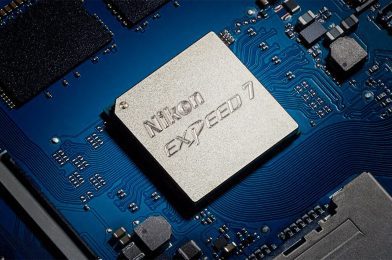According to Nikon, the single Expeed 7 processor in the Z9 is ten times faster than the dual Expeed 6 in the Z6 II and the Z7 II.
As a photographer, I’ve witnessed several technological advancements transforming the industry, from the shift to digital cameras to the introduction of photo editing software. However, 2023 is shaping up to be the year of AI, and I believe it will be the most significant shift yet.
The idea of “artificial intelligence” is closely linked to “neural networks.” In essence, a neural network is a digital emulation of the human brain. The network’s cells, comparable to neurons in the human brain, connect using synapses – specific connections – much like the “biological” brain. They receive and process signals from the outside.
Therefore, artificial intelligence refers to a non-biological system that can perceive and process information, draw conclusions, and act based on it.
With the latest processors and software, AI is now being put in the hands of the public, and it’s changing the way we take, edit and share photographs. One example is the AI technology inside the Nikon Z9, enabling faster and more accurate autofocus, even in low-light conditions. This technology makes it easier for photographers to capture the perfect shot, regardless of their environment.
Furthermore, AI software like Topaz Photo AI, DXO PureRAW 3, and Lightroom’s latest update with AI masking and Denoise gives photographers the tools to produce higher-quality images for their clients. With AI-powered image processing, we can remove noise, sharpen images, and improve overall image quality with once considered impossible.
Some may fear AI technology will replace human photographers, but I believe it will only enhance our abilities and provide new opportunities. AI technology will allow us to produce more impressive work and take on more significant projects.
These are my milestones with Digital Photography
1993 – Started using Photoshop for photo editing.
1993-94 – Websites for everyday use became available.
2000 – Created the first website and hosted it on Compuserve.
2002 – Nikon introduces the Nikon D100 at $1900, making professional-level digital photography more accessible.
2003 – Digital cameras outsold film cameras for the first time.
2006 – Started a blog to keep in touch with students while teaching photography at YWAM. Adobe Lightroom was introduced, making it easier to edit multiple images at once.
2007 – The iPhone was introduced, changing how people view and capture photos.
2013 – Bought the first mirrorless camera, the Fuji X-E2, to experience a more minor, lighter camera system.
2015 – Lightroom introduces facial recognition in the library module, making it easier to tag people’s names into the metadata of photos.
2018 – Bought the mirrorless Nikon Z6 and sold all Fuji cameras to have one camera ECO system.
2021 – Bought the Nikon Z9 and sold off all DSLR cameras, upgrading to the latest technology.
2022 – In January, I bought DXO PureRAW 2 to help process images from the Nikon Z9, which was not performing well with Lightroom.
2022 – Chat GPT, a new language model for natural language processing, was introduced. Immensely helped write correspondence in emails, blogs, and estimates.
2022 – Bought Topaz Sharpen AI and Denoise to assist in processing high ISO images.
2023 – Bought DXO PureRAW 3, and shortly after that, Lightroom introduced their Denoise feature into the software.
Throughout the years, technology has played a crucial role in shaping the photography industry. From the introduction of digital cameras and photo editing software to the rise of mirrorless cameras and AI-assisted software, photographers have been able to produce higher-quality images for their clients.
In conclusion, 2023 may well be remembered as the year AI technology changed the world of photography, and I’m excited to be a part of this revolution. Embracing AI is the key to taking our work to the next level and providing our clients with the highest-quality images possible. So let’s assume this change and continue to push the boundaries of what’s possible in photography.

